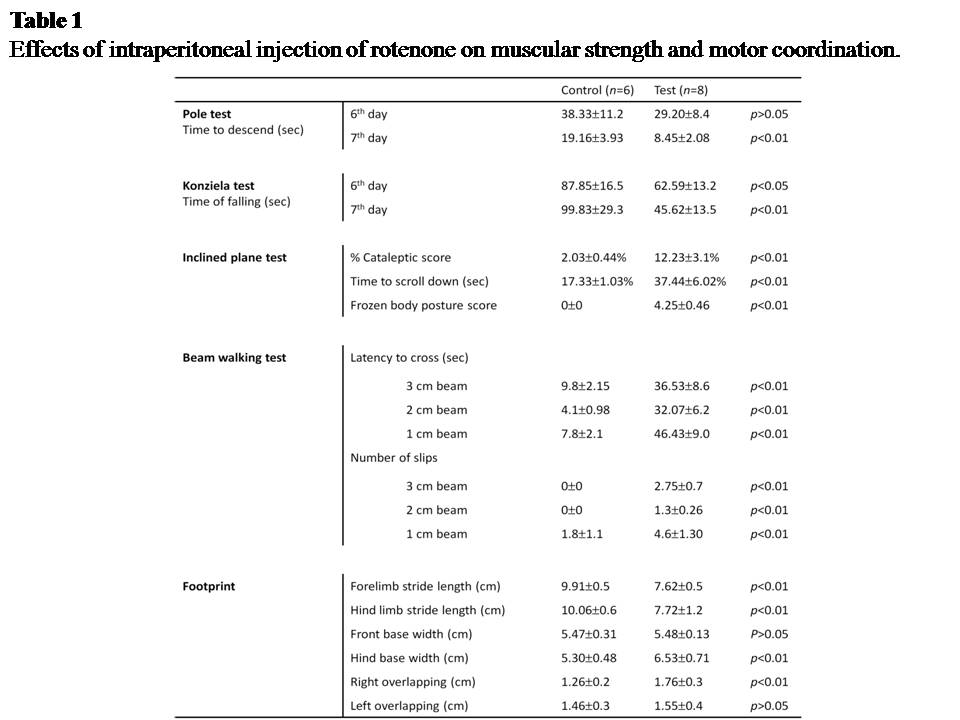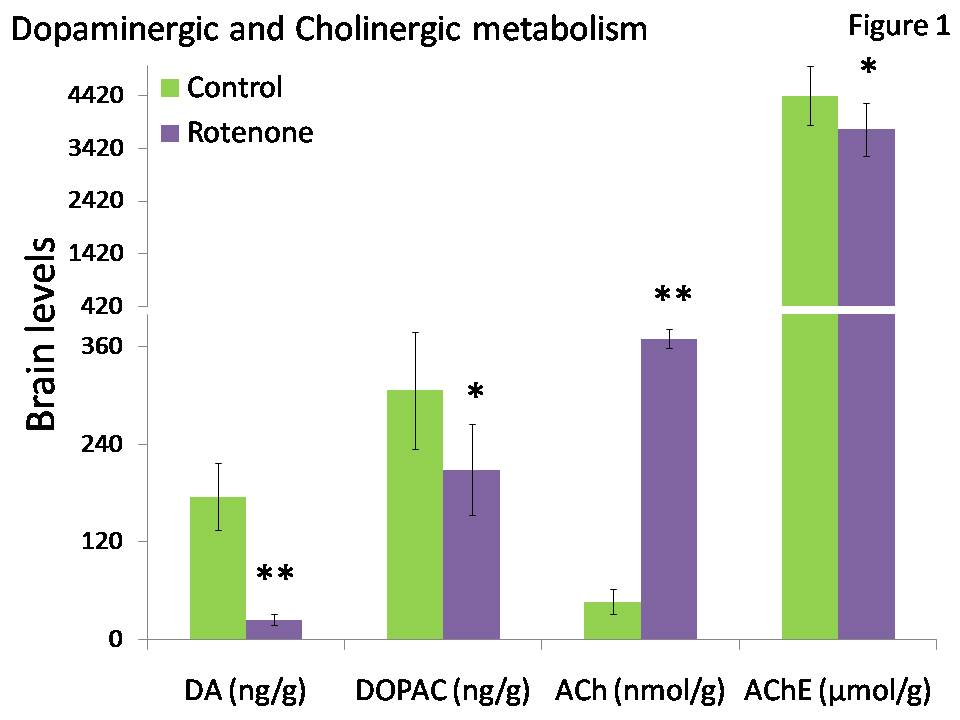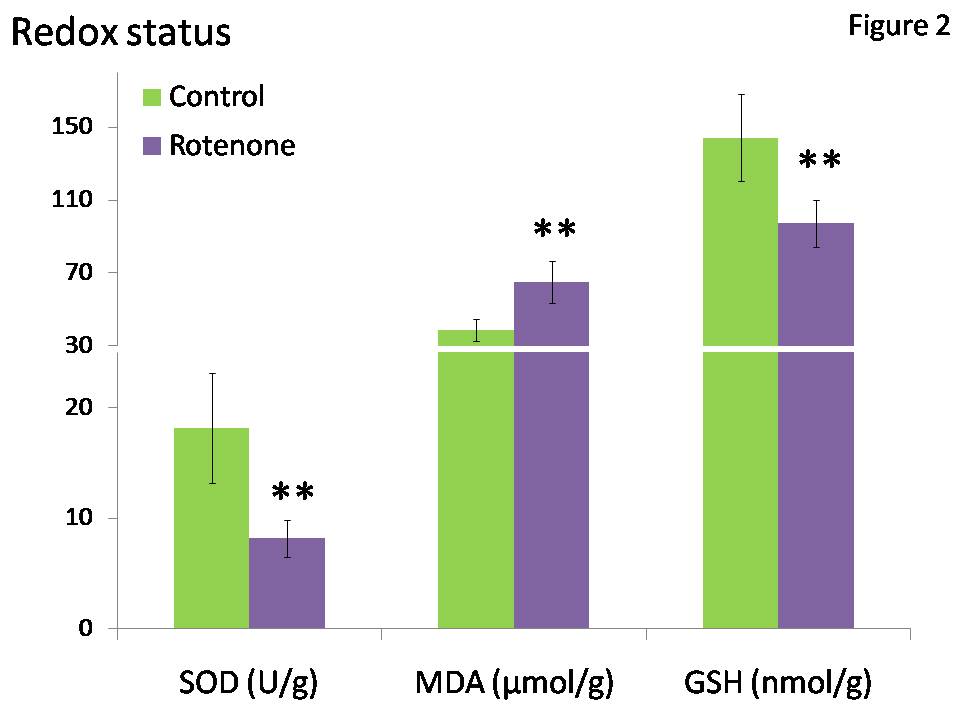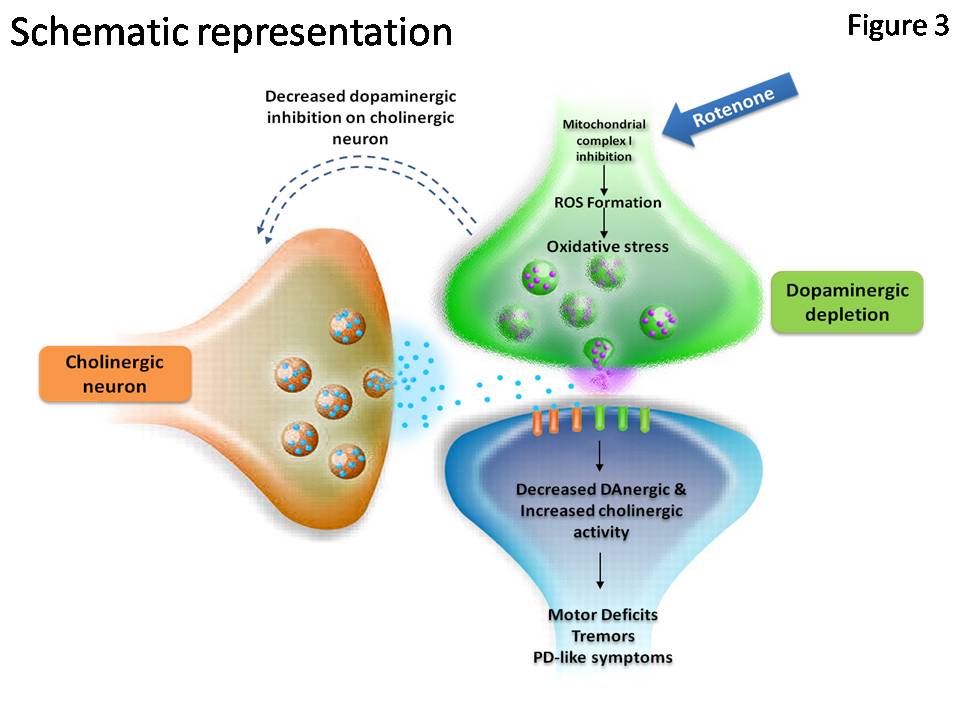Session Information
Date: Tuesday, June 6, 2017
Session Title: Drug-Induced Movement Disorders
Session Time: 1:45pm-3:15pm
Location: Exhibit Hall C
Objective:
In the present study we analyzed rotenone-induced gait abnormalities, muscular weakness and locomotor deficits in rats. The study also evaluated the effects of rotenone on acetylcholinesterase (AChE) activity and relationship between brain dopamine (DA) and acetylcholine (ACh) levels and their association with Parkinson’s-like symptoms.
Background:
Rotenone (widely used as an organic pesticide and specific inhibitor of mitochondrial complex I) produces features in rats that recapitulate behaviorally, biochemically and neurochemically the symptoms of Parkinson’s disease (PD). However, some aspects remain indistinct regarding the effects of rotenone as an animal model of PD.
Methods:
In the study, adult male rats were administered intraperitoneally with rotenone at a dose of 1.5 mg/kg/day for eight days. Motor activity and muscular strength were monitored by the inclined plane test, footprint test, beam walking test, pole test and Kondziela’s inverted screen test. Animals were decapitated after behavioral analysis and brains were dissected out for biochemical estimation such as antioxidant enzyme activities and acetylcholinesterase (AChE) activity and neurochemical estimation was also performed by HPLC-EC.
Results:
Results showed that the level of DA and its metabolite were significantly decreased (figure 1) which was in turn reflected by significant impaired motor coordination in rotenone treated rats in all observed behavioral parameters (table 1). Along with these the level of reduced glutathione (GSH) and superoxide dismutase (SOD) activity declined significantly which ultimately increased lipid peroxidation (LPO) (figure 2). Moreover, AChE activity was significantly decreased and ACh levels significantly increased in brains of rotenone administered rats (figure 1).
Conclusions:
In conclusion, this study further provides indication that rotenone administration in rats produces PD-like symptoms which is evident by behavioral, neurochemical and biochemical changes (figure 3). This study also highlights the rotenone-induced imbalance between dopaminergic and cholinergic modulation which is exhibited in PD.
References: 1) Blandini, F., Armentero, M.T. (2012). Animal models of Parkinson’s disease. FEBS. J. 279, 1156–1166. 2) Alam, M., Schmidt, W.J. (2002). Rotenone destroys dopaminergic neurons and induces parkinsonian symptoms in rats. Behav. Brain Res. 136, 317–324.
To cite this abstract in AMA style:
S. Madiha, S. Haider. Imbalance between dopaminergic and cholinergic neurotransmission following rotenone administration suggestive of Parkinson’s-like symptoms in male rats [abstract]. Mov Disord. 2017; 32 (suppl 2). https://www.mdsabstracts.org/abstract/imbalance-between-dopaminergic-and-cholinergic-neurotransmission-following-rotenone-administration-suggestive-of-parkinsons-like-symptoms-in-male-rats/. Accessed April 2, 2025.« Back to 2017 International Congress
MDS Abstracts - https://www.mdsabstracts.org/abstract/imbalance-between-dopaminergic-and-cholinergic-neurotransmission-following-rotenone-administration-suggestive-of-parkinsons-like-symptoms-in-male-rats/




